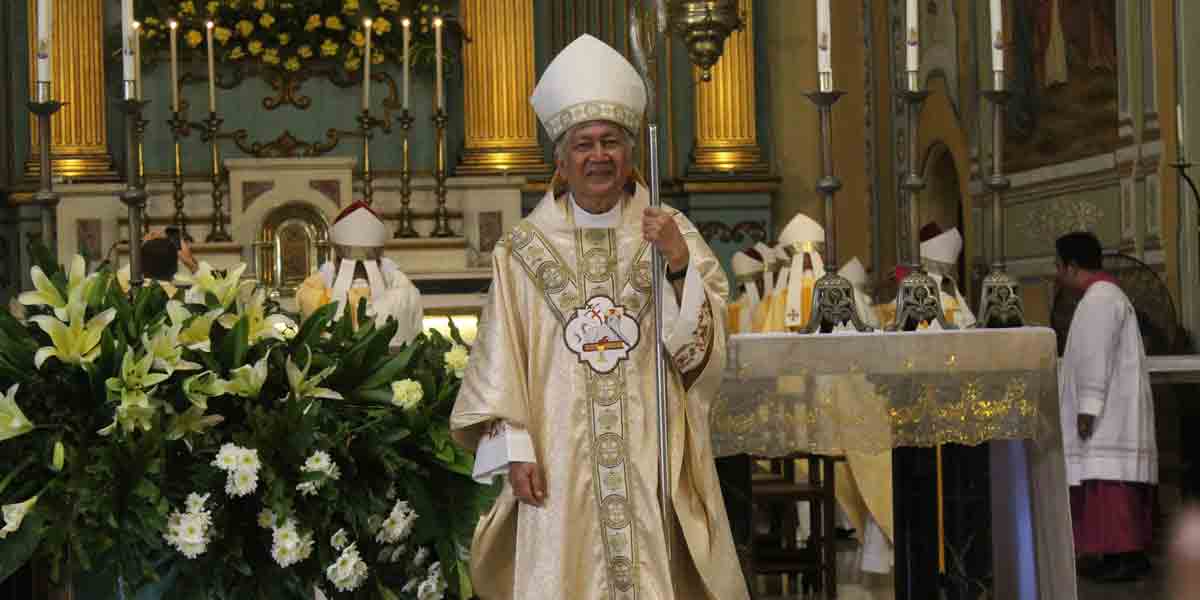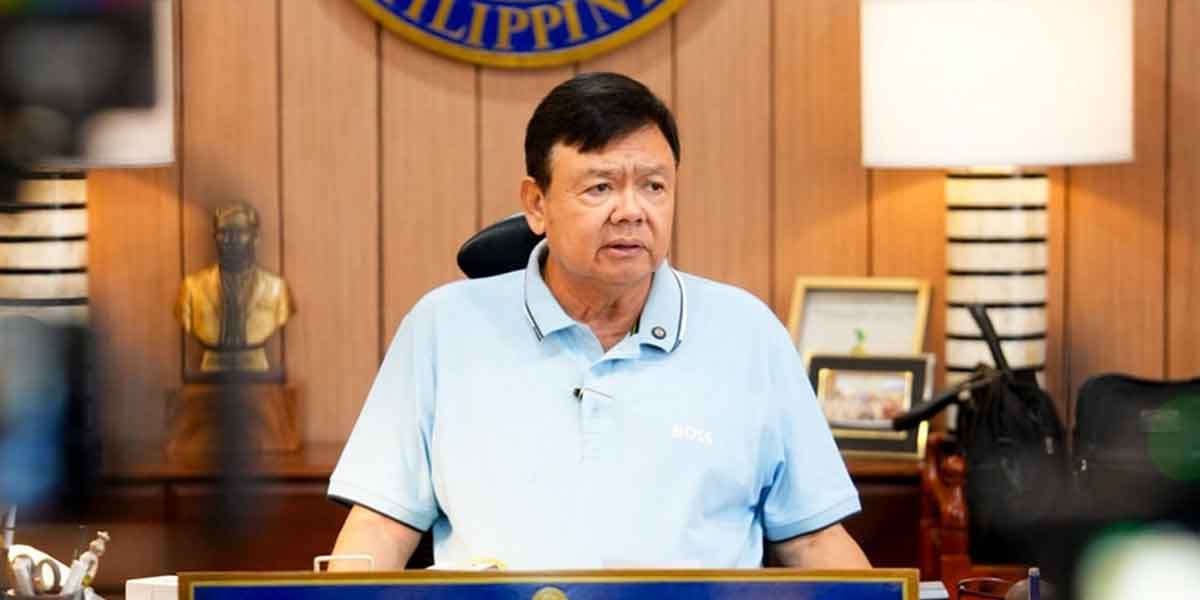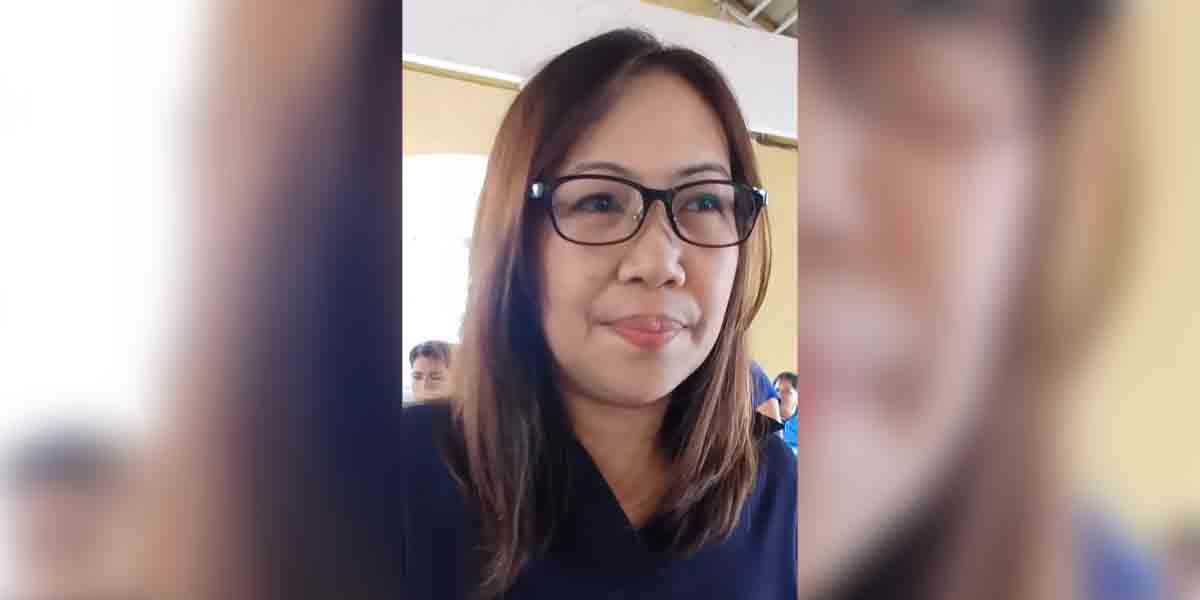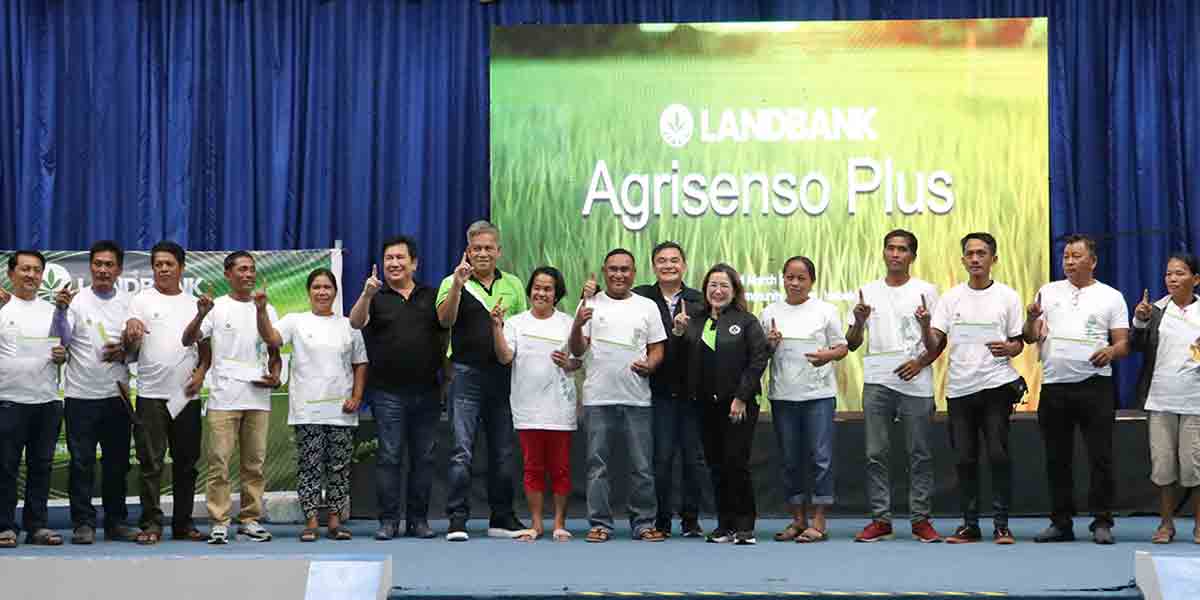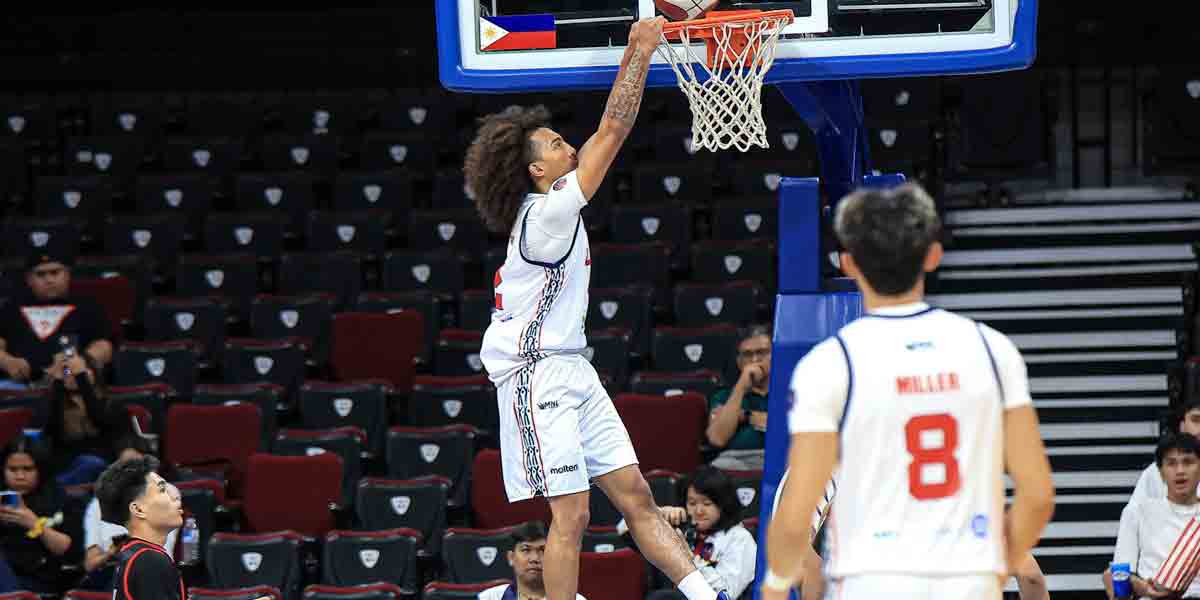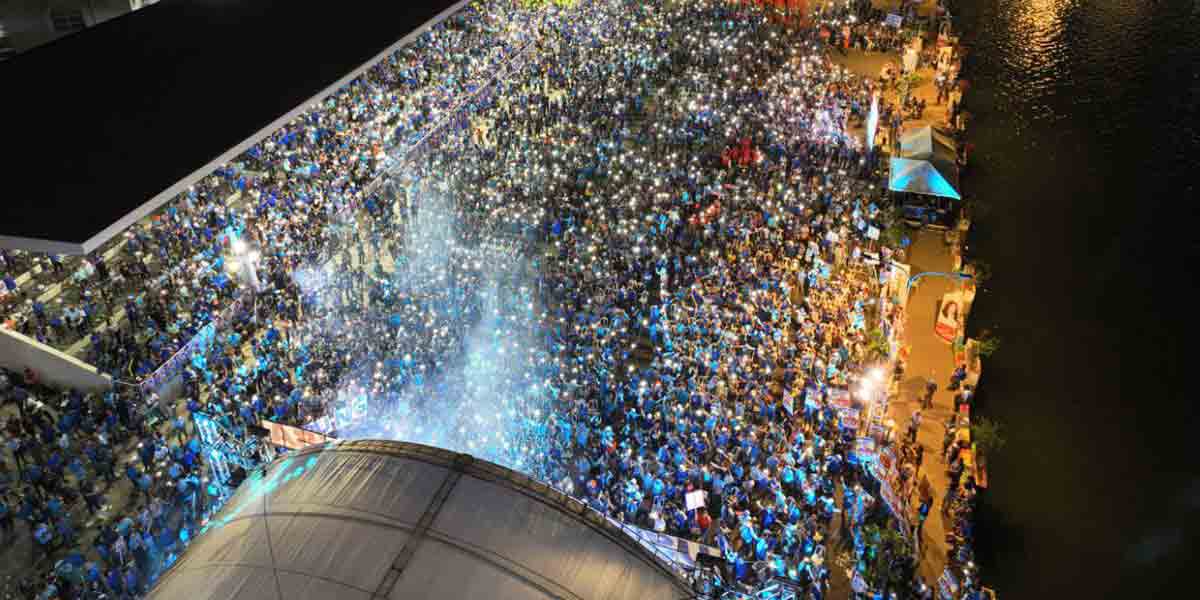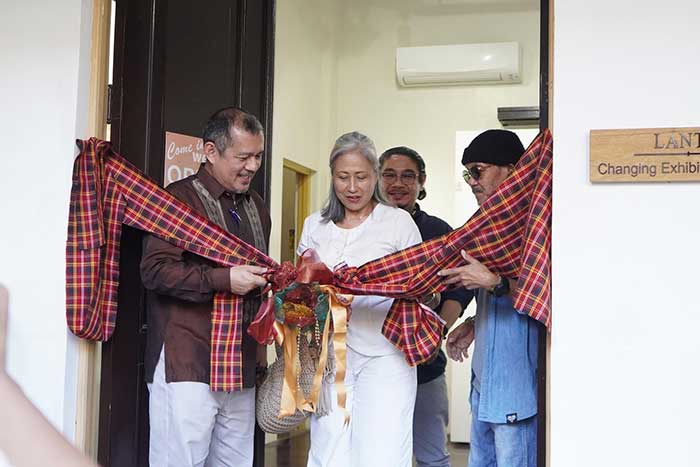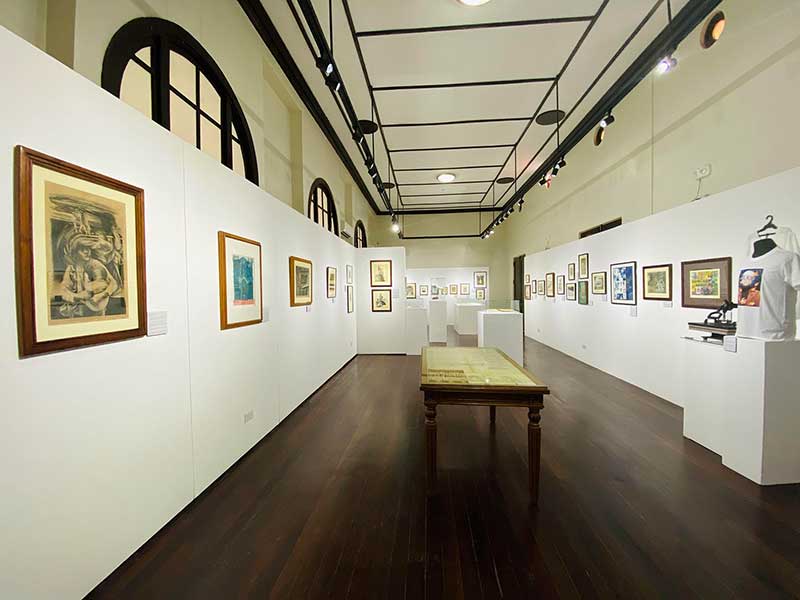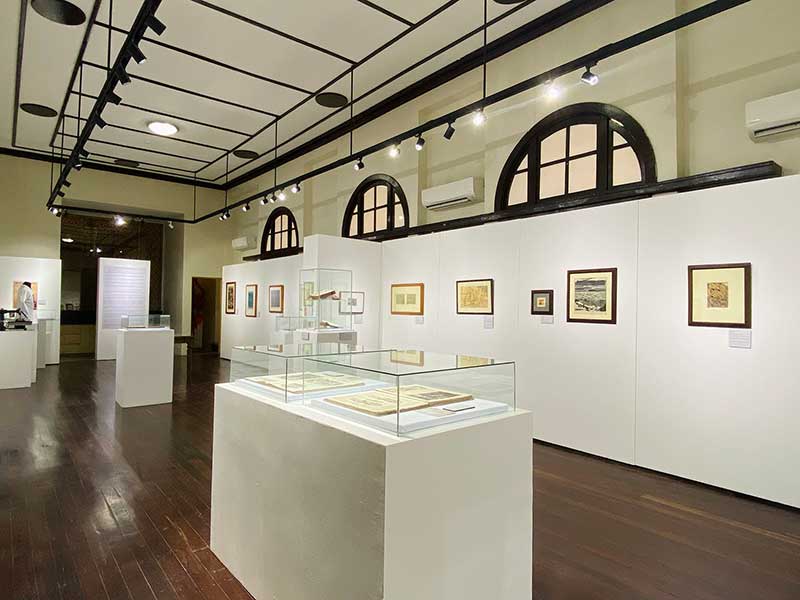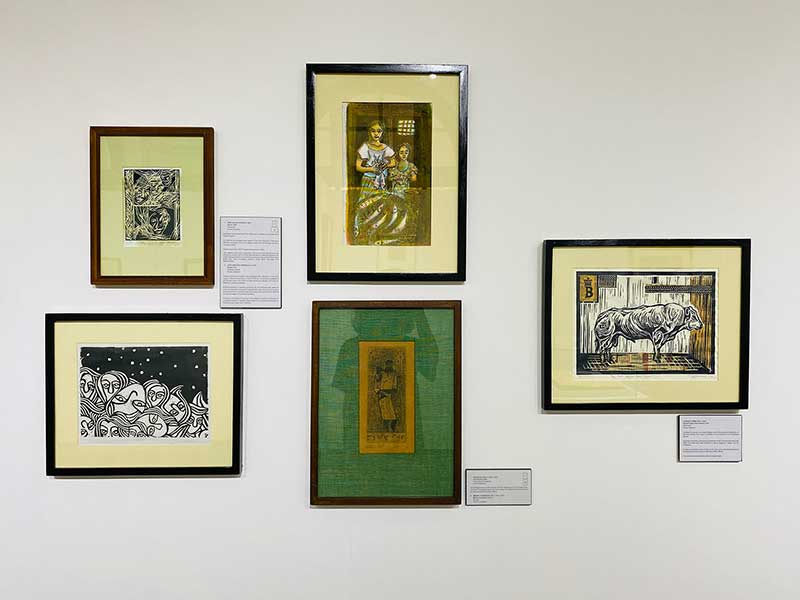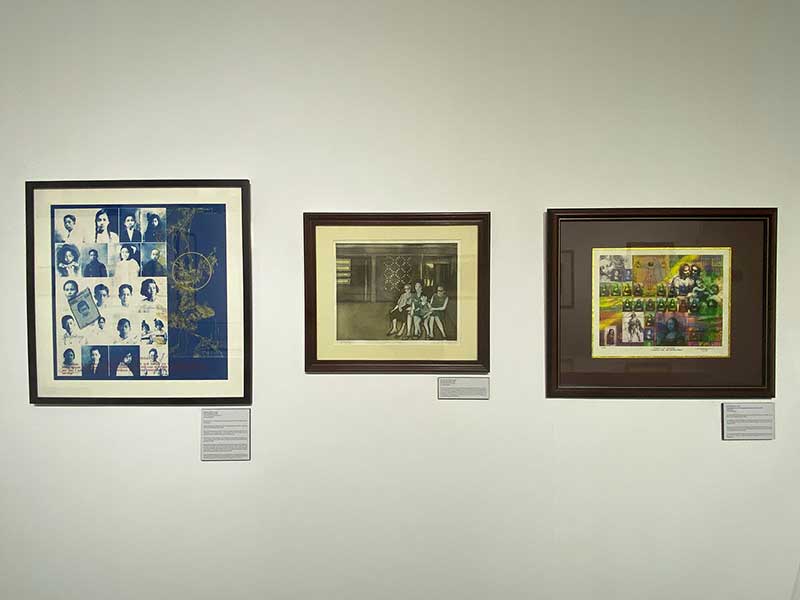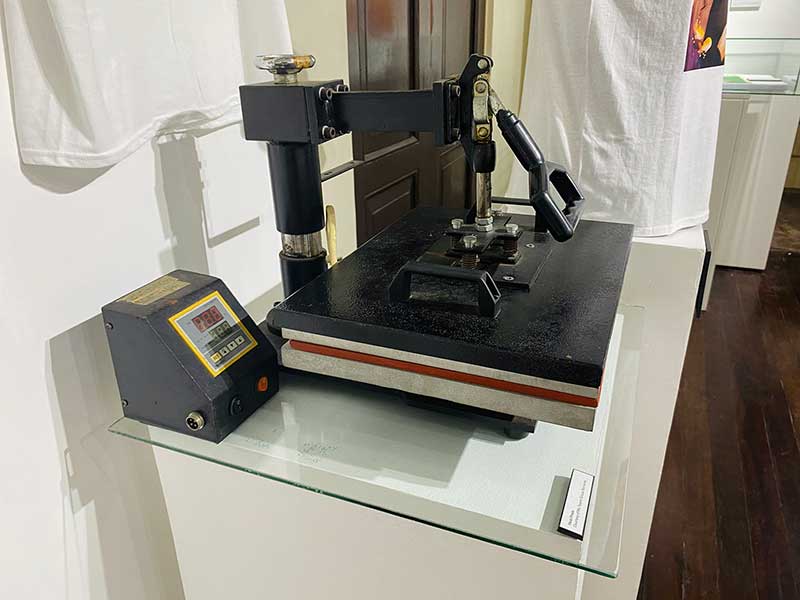By Mariela Angella Oladive
The University of the Philippines Visayas Museum of Art and Cultural Heritage (UPV MACH) inaugurated its latest exhibition, titled “Balhag: Printing and Printmaking,” on October 18 at the Lantip Changing Exhibition Gallery 1, coinciding with the celebration of National Museum and Galleries month.
The event was marked with a ribbon-cutting ceremony led by Dr. Kristin Treñas, chairperson of the Iloilo City Cultural Heritage Conservation Council (ICCHCC), Dr. Clement Camposano, UPV chancellor, Prof. Martin Genodepa, director of the Office of Initiatives for Culture and the Arts (OICA), and multi-media and multi-awarded Ilonggo artist Mr. Ed Defensor, whose works are also on display in the exhibition.
Showcasing an outstanding array of prints, the “Balhag: Printing and Printmaking” exhibit provides a unique opportunity for art enthusiasts, history buffs, culture aficionados, and general viewers to explore the intricate world of printing and printmaking. It takes visitors on a captivating visual journey of the evolution of these crafts in both the Philippines and Western Visayas.
The exhibition spotlights the works of pioneering Filipino printmakers, including Manuel Rodriguez Sr., Pandy Aviado, Ofelia Gelvezon Tequi, Brenda Fajardo, Neil Doloricon, Juvenal Sanso, Santiago Bose, and Fil de la Cruz, among others, whose artistry stands as a testament to the enduring legacy of printmaking in the Philippines.
Included in the featured prints is Ofelia Gelvezon Tequi’s Another Generation in 1979, which shows an image of the artist, her son, her grandmother, and Nanay Eding sitting in front of the house of an ex-Mayor from Guimbal, who was the artist’s aunt—the print employed etching and viscosity printing. Etching is a printmaking technique that involves using acid to incise a design onto a metal plate, typically made of copper, while the viscosity method encompasses both intaglio and relief printing, which involves mixing inks at different viscosities or consistencies that affect the ink’s stiffness or flow, allowing artists to layer the different colors on the plate and run it through the press just once to print the image.
In addition to the esteemed artists mentioned above, “Balhag” also highlights the works of West Visayan artists who have contributed to the flourishing of printmaking in the region, including artists Ed Defensor, PG Zoluaga, Angela Silva, among others who have created a diverse and captivating collection of prints that further enrich the exhibition.
An example work is Defensor’s Playing with Leonardo, a digital print, which, as the title suggests, played with Leonardo da Vinci’s famous works, including the Mona Lisa and Vitruvian Man.
“Balhag,” other than featuring printmaking art, also journeys through the history of printed materials in the Philippines. The exhibit includes publications, some dating back to the 1700s, which provide invaluable insights into the historical context and the evolution of printed materials in the country.
Among the local works displayed is the Makinaugalingon’s reproduction of the front page in May 1919, one of the very few front pages with an editorial Illustration printed by Makinaugalingon. It uses local terms for days of the week (Hingothingot for Saturday) and months of the year (Himabuyan for May).
The Makinaugalingon (meaning self-reliant) is the first Hiligaynon newspaper in Iloilo, founded in 1913 by Don Rosendo. They published advertisements, news, essays, creative writing, songs, speeches, zarzuelas, and many more.
While both printing and printmaking share the same fundamental process, using ink and pressure to transfer text, images, or designs from one surface to another, the distinction between the two is profound. Printing predominantly focuses on producing materials for reading, such as books and newspapers, while printmaking is broad and usually a form of graphic art that uses lines and tones to create the artwork.
As the exhibition notes described, “printing and printmaking are two peas in a pod.” It aptly shows the close connection between the two processes, emphasizing their intrinsic relationship. The connection is encapsulated by the Hiligaynon term “Balhag,” which means to print or impress. It is a unifying concept that alludes to the connections between the two processes, representing the link between human communication and artistic expression.
Curated by Prof. Genodepa, the exhibit aims to cultivate a greater appreciation for printing and printmaking. It also serves as a platform for sharing knowledge and artistic expression, highlighting their vital roles in preserving our cultural heritage.
The exhibit will run until February 2024 with free admission. UPV MACH is open from Monday to Friday, 8:30 AM to 4:30 PM.

